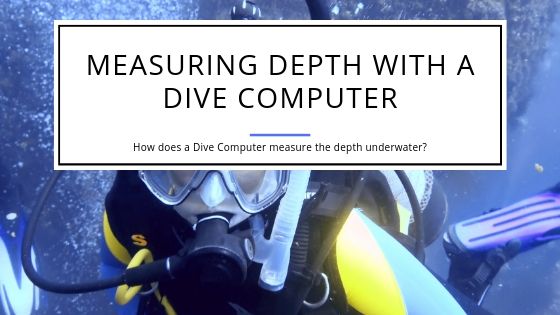Measuring Depth with a Dive Computer
Do you ever wonder how deep the ocean is? When you sink into the surface and enter into the blue world, it seems like an endless abyss that could go on forever. Well, the ocean may seem like a fantasy world.
Scuba diving itself requires great skill and the right equipment. This includes a dive computer to measure the depth you’ve swum to since it impacts how many stops (if any) you’ll make while you rise to the surface. So let’s dive right into it.
What exactly is a Dive Computer?
Dive computers are often shaped like a watch or are mounted in a console. They play an important role of monitoring a diver’s depth in the water, the temperature, the amount of time a diver can safely spend under the surface as well as some other, additional features.
Their main role is to track the diver’s oxygen and nitrogen levels to inform the diver of the amount of time they can spend underwater without the danger of the formation of gas bubbles.
Dive computers compare the amount of nitrogen a diver takes in and breathes out. When deep diving, this is used to recommend when the diver should take decompression stops and for how long.
Certain high tech computers, such as the air-integrated ones will actually measure the exact time period of your dive and track how much gas you have left in the tank.
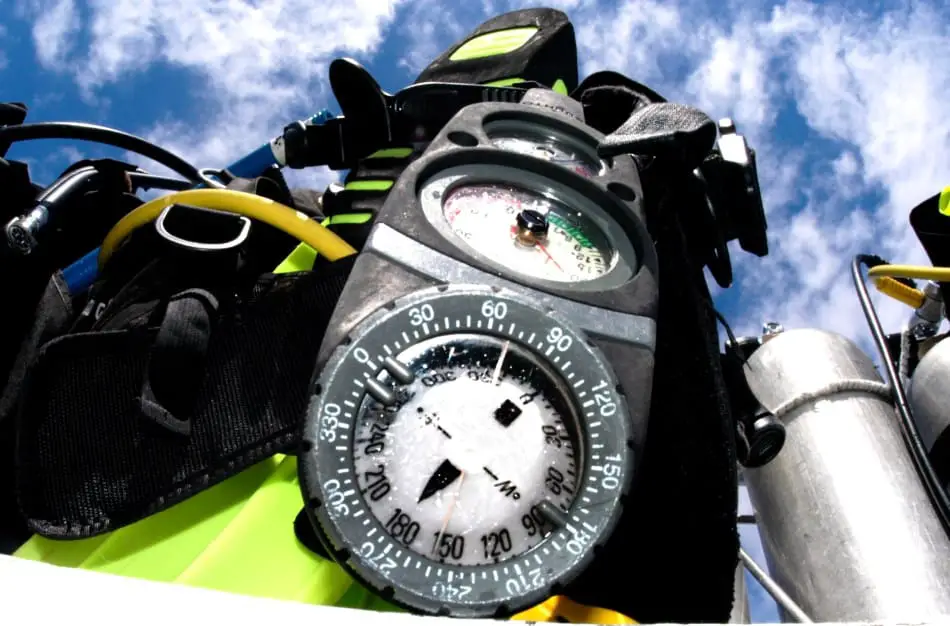
Why Measure Depth
As mentioned earlier, dive computers track nitrogen levels to recommend the right decompression stops. The aim is to stop at the right depth and time to prevent the formation of gas bubbles in your system as their presence can lead to decompression sickness.
While it’s in many cases serious but not deadly, decompression sickness can cause pain in your joints and muscles. If the problem gets serious, it may even lead to paralysis. In the worst case it can lead to the death of a diver.
A dive computer is essential to give you accurate measurements of your depth under the surface and the time period you have to ascend to the surface. This helps in drastically lowering the risk of decompression sickness.
How is Depth Measured?
A mechanical dive computer works with the help of a Bourdon tube pressure gauge. This gauge comprises an oil-filled spiral tube with a closed gauge at the end along with a diaphragm.
As you sink into the water, the water pressure presses the diaphragm and the tube starts to straighten out. The degree of the curve remaining in the spiral is one of the factors used to measure depth under water.
Dive computers make their calculations with the help of algorithms for accuracy. In a dive computer, these algorithms are similar in their calculations as if you use dive tables. Algorithms may be:
1. Conservative- they rely more on safety and keep the dive time restricted to reduce any risk of decompression sickness.
2. Liberal- they keep a longer time span for the dive and the risk of decompression sickness is relatively higher.
Dive computers may make use of one or more algorithms in tandem to give more accurate measurements and ensure your safety underwater. Different algorithms may be used for different water temperatures, different nitrogen levels and so on. They also store information from your past dives and incorporate that history when calculating your depth and stopping points.
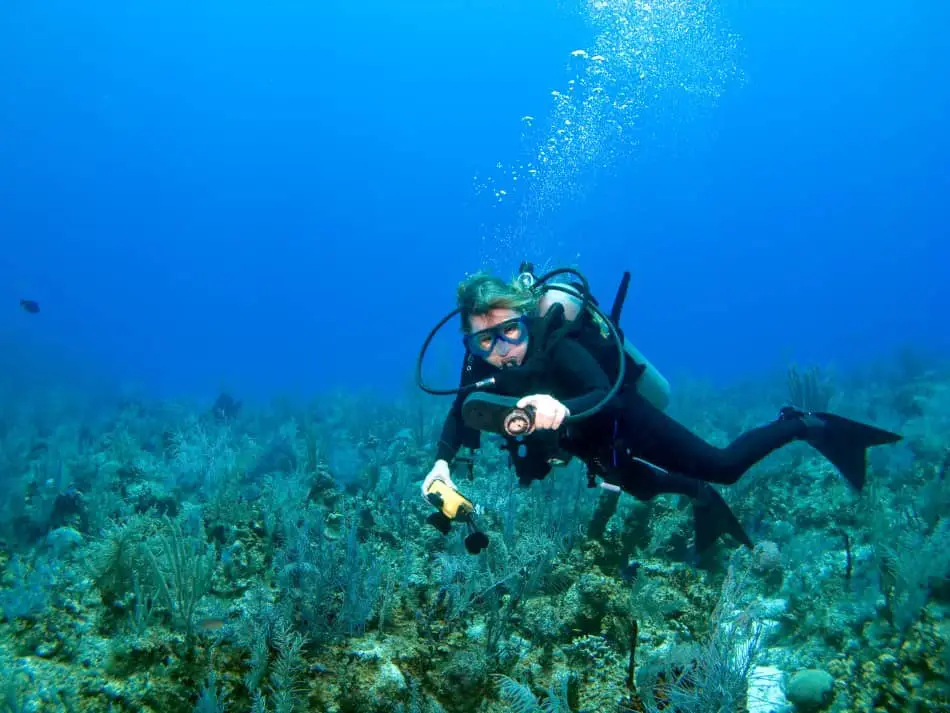
Looking at the Different Algorithms
Different dive computers make use of different models and algorithms when measuring depth. Most high tech dive computers will be making use of a combination of the famous Bühlmann Model and the Bubble model. They take into account the movement of gases in and out of the body as well as the development of gaseous bubbles.
Both of these are affected by the depth you’re diving to and the rate at which you make your ascent to the surface. In addition, your short-term dive history is taken intp consideration. Let’s look at how some of them work.
Oceanic Dual Algorithm
As the name suggests, Oceanic uses two different algorithms to calculate depth to give customized readings for different dives.
1. The Pelagic DSAT: It calculates your total time spent under the surface by providing values for no decompression time, time spent outside the water and also the adjusted no decompression time.
2. The Pelgaic Z+: This one takes temperature into account as well, more specifically suited for colder climates. It relies on the Bühlmann Model and is used for deeper dives with a longer dive time.
The Reduced Gradient Bubble Model
This model supports deeper dives. It on the formation of gas bubbles in the system, the amount of gas inhaled and exhaled and the growth of gas bubbles in the bloodstream.
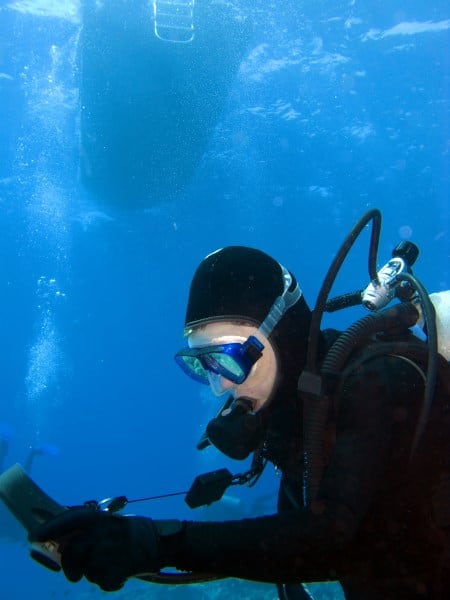
What Impacts Calculated Depth?
Let’s take a look at the factors which can impact the calculations made by your dive computer.
Calibration
Dive computers must be calibrated according to the type of water they are being used in. This essentially refers to whether you are going scuba diving in salty or sweet water.
Salty water has a higher density and a greater weight value per meter depth. This impacts the points where a diver makes their decompression stops and for how long.
Your device must be calibrated accordingly to account for the salinity of the water to obtain accurate measurements.
Water Density
Water density differs in sweet and salty water and this directly impacts the effort a diver must exert to move around underwater. This is also known as drag.
Divers are more buoyant (likely to float) in salty water and must attach additional weight for scuba diving. This may include having a more weighted wetsuit and other diving equipment.
When diving, your total weight is not just your body weight; it is the sum of your body weight and your diving equipment. This will impact dive computer calculations as the greater the weight, the more time will be required to rise to the surface due to a higher drag.
Temperature
The temperature of the water is important for your health, safety and level of comfort in the water. However, it does not have any significant impact on depth calculations and hence is not taken into consideration.
Dive computers do provide the option of calculating water temperature for your personal safety and comfort during your dive.
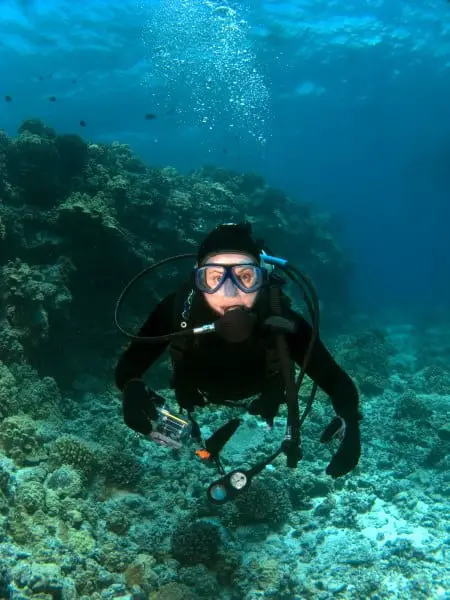
How Accurate is the Depth Measured?
No dive computer is 100% accurate. There is always a margin of error with most dive computers having a standard 0.3 meters (or 30cm) deviation from the actual reading.
These errors may vary among different brands and are also affected by whether your device is calibrated, according to salty water or sweet water. The saltier the water, the shallower the depth measured.
There are a few ways to work around these factors. As far as the water salinity is concerned, it does not affect the decompression calculations made by your dive computer. Those focus more on water pressure than depth.
Hence, this will not have a significant impact on your dive calculations. You can hold on to two dive computers if you want a greater accuracy in your readings. This is not essential, but if your dive computer seems to be giving an error that is very high, such as 2-3 feet, it is advisable to get your device checked by a professional and potentially replaced.
Dive computers may not always offer complete accuracy or work with algorithms you are familiar with. It is always advisable that you do a little prior research on the different manufacturers of dive computers and their specifications so that you end up with a device that you’re comfortable using during your dive.
Having the right dive computer is especially important during deep dives to measure your depth underwater. It then has to measure the depths at which you need to take your decompression stops in order to ensure that you do not contract decompression sickness which can potentially be very harmful.

